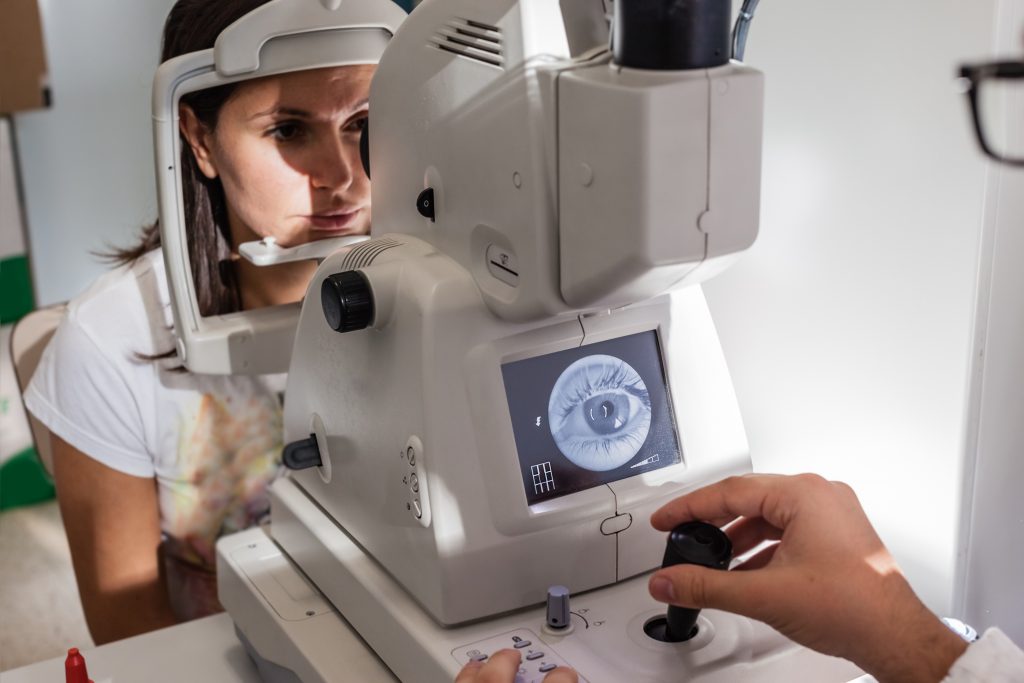What Health Issues Can an Eye Exam Detect?

When you visit your eye doctor, you probably expect them to assess and diagnose problems related to your eyes. However, did you know that an eye exam can detect a wide range of medical conditions throughout the body? For instance, your doctor may discover high blood pressure, diabetes, high cholesterol, or even cancer symptoms by performing an eye exam.
For this reason, you should schedule an eye exam regularly like any other physical exam. Early detection may help you prevent or manage certain conditions before they become major medical problems. Below, we list several diseases or medical conditions that an eye exam can detect.
Brain Tumors
Your eye exam could help detect signs of a brain tumor. If you have a brain tumor, your doctor may notice that you have blurry vision, one pupil dilating more than the other (or one remaining fixed) or they may detect changes to the optic nerve's color or shape.
Cancer
A comprehensive eye exam can detect multiple types of cancer. The most common skin cancers—basal cell, squamous cell or melanoma—may be present on the outer surface of the eye or eyelids. Additionally, lymphoma or leukemia can cause changes in the eye's interior.
Diabetes
Blurry vision can be one of the first signs of diabetes, so eye doctors are often the first health professionals to diagnose the disease. However, diabetes can be diagnosed from an eye exam even without any noticeable symptoms.
Giant Cell Arteritis
If giant cell arteritis affects the eye, the optic disc appears pale and puffy. This condition is known as anterior ischemic optic neuropathy and is the worst complication of giant cell arteritis.
High Blood Pressure
By viewing the blood vessels in the retinas of your eyes, your eye doctor can detect early signs of high blood pressure, also known as hypertension. Because these changes can occur without symptoms, it is crucial to examine your eyes regularly.
High Cholesterol
Your optometrist can detect early signs of high cholesterol in two ways: In patients under 40, one sign of high cholesterol is a blue or yellow ring around the cornea. In all patients, cholesterol deposits in the retina's blood vessels can indicate high cholesterol levels throughout a patient's body.
Lyme Disease
Ocular symptoms of Lyme disease can include sensitivity to light and spots in front of the eyes. Inflammation of the optic nerve can also occur, leading to visual loss, which can also result from inflammation in the brain.
Multiple Sclerosis
A simple eye exam might prove to be an inexpensive and effective way to gauge and track multiple sclerosis, a debilitating neurological disease. An eye exam can potentially complement costly magnetic resonance imaging used to detect brain shrinkage, a characteristic of the disease's progression.
Myasthenia Gravis
Myasthenia gravis can be difficult to diagnose, and you may need several tests. First, a general practitioner will ask about your medical history and symptoms. Alternatively, an optician may detect double vision or eyelid drooping problems.
Rheumatoid Arthritis
Rheumatoid arthritis can cause inflammation in the white part (sclera) of your eyes, resulting in redness and pain. If you have rheumatoid arthritis and experience eye pain, vision changes or other eye problems, consult an ophthalmologist for an evaluation.
Sexually Transmitted Diseases
An eye doctor can detect signs of chlamydia, gonorrhea and syphilis using a special ocular instrument known as a slit lamp to examine various tissues of the eye under a stereoscope.
Sickle Cell Disease
A person with sickle cell disease should begin having eye exams at nine or ten years of age. The exams should be repeated annually for patients with sickle hemoglobin C disease and every other year for those with other types of sickle cell disease.
Sjögren's Syndrome
An eye doctor may perform a diagnostic test, such as Schirmer's or an epithelial staining test. During the Schirmer's test, the ophthalmologist places a strip of special paper on the inside of both lower lids.
Thyroid Disease
Your eye doctor may ask whether you've ever had thyroid problems or have an autoimmune disease, and your endocrinologist might ask if you have any issues with your eyes. Your endocrinologist or primary care doctor can run blood tests to check your thyroid hormone levels and confirm the diagnosis.
Vascular Disease
Because the health of your eyes is related to the health of your heart, eye exams can detect several cardiovascular conditions, such as clogged arteries, often before you even know there's a problem.
Vitamin A Deficiency
To detect a Vitamin A deficiency, the doctor will begin by completing an eye exam and reviewing your medical history. They may also complete a blood test to measure the amount of vitamin A in your blood. Because vitamin A deficiency is more common in impoverished areas with limited medical access, the diagnosis is often made informally.
Schedule an Eye Exam Today
Contact Gulf Coast Vision Center today at one of our Pace, Milton, Crestview or at our Pensacola locations on Nine Mile and in East Hill to schedule a comprehensive eye exam.
